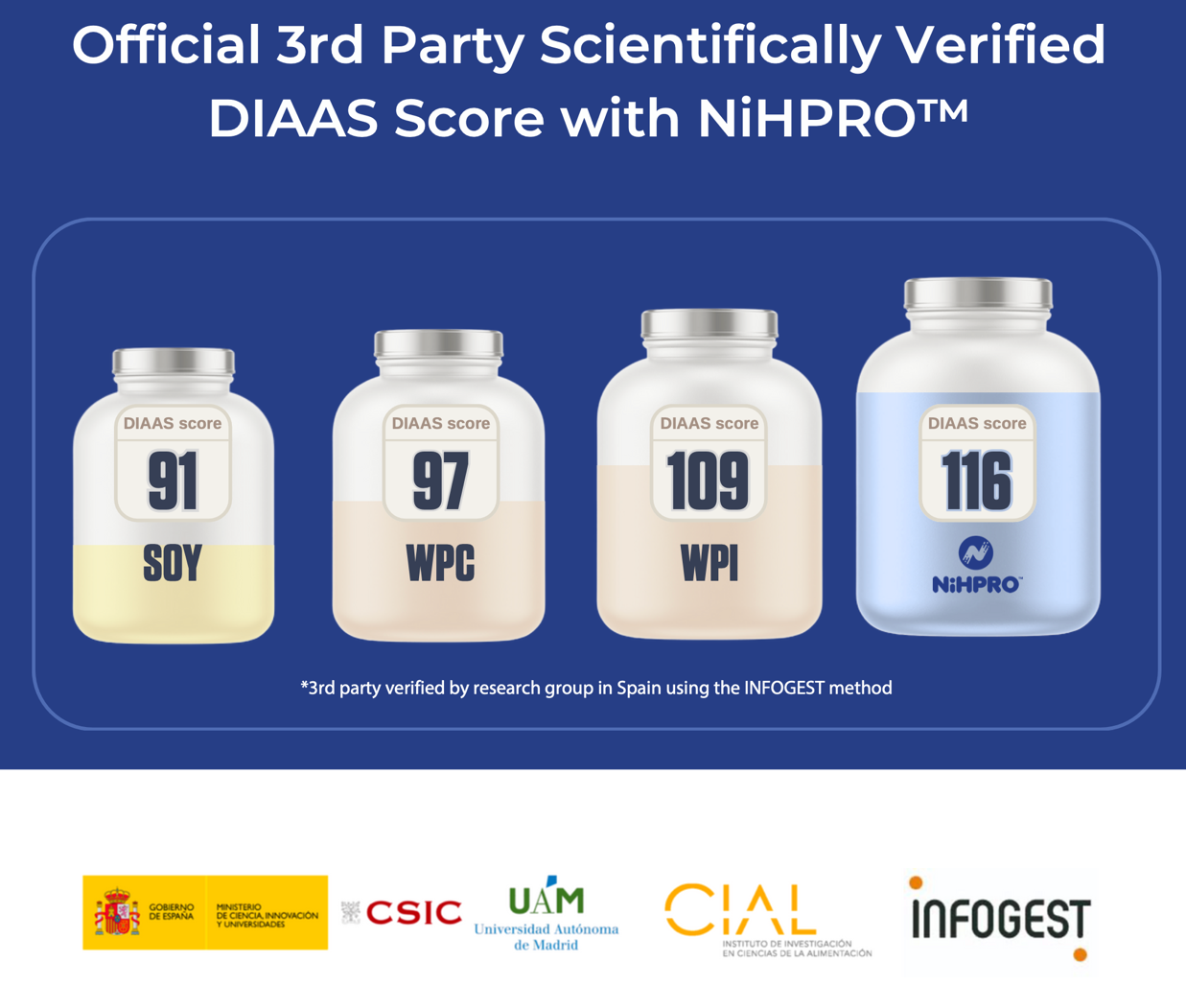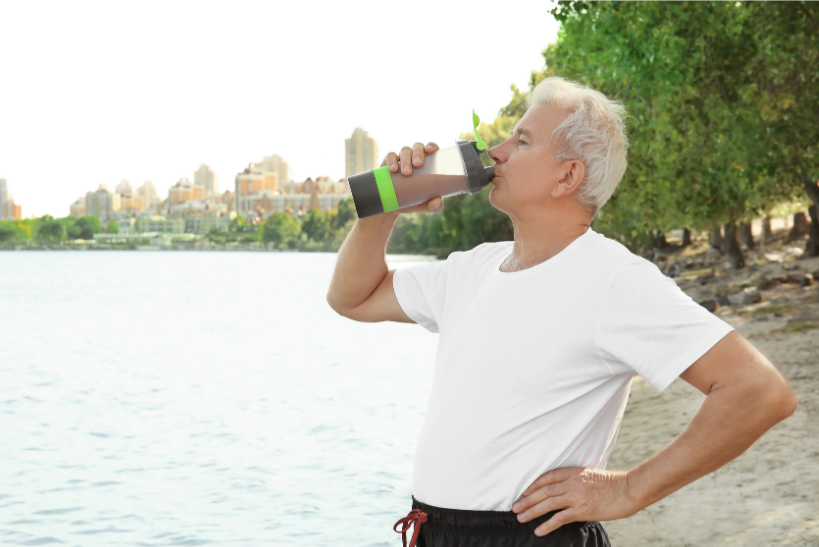
Editorial by Dr. Seiji Aoyagi
General Manager of NiHTEK® Japan
NiHTEK®’s Chief Science Officer (CSO)
- Leading PhD in nutrition from Japan.
- Has been in the industry for over 35 years, both in clinical and sports nutrition and worked for Abbott, GSK and Danone.
- In charge of 3rd party research with key scientists across the globe.
- General Manager of NiHTEK® Japan.
I just celebrated my 62nd birthday, so I thought it would be appropriate to address the importance of protein intake for my generation. Protein consumption is crucial for elderly individuals, particularly those experiencing anabolic resistance—a condition where the body’s ability to synthesize proteins diminishes with age1. This resistance can lead to muscle loss, decreased strength, and increased frailty, significantly impacting overall health and quality of life.
Muscle maintenance and growth are key concerns for the elderly, and adequate protein consumption helps counteract muscle loss associated with aging. Protein supports muscle protein synthesis, which is essential for maintaining physical strength and functionality2. Nonetheless, inadequate protein intake and anabolic resistance can lead to a condition known as sarcopenia.
Sarcopenia, the age-related loss of muscle mass and strength, can be mitigated through proper protein intake. Regular consumption of high-quality protein sources can slow down or even reverse this condition3. High-quality protein refers to those with higher DIAAS (Digestible Indispensable Amino Acid Score).
In addition, protein plays a critical role in healing and recovery for elderly individuals recovering from illness or surgery. It supports tissue repair and immune function, helping to reduce recovery time4.
Protein is not just important for muscle health—it also contributes significantly to bone health. Protein makes up about 30–40% of bone’s dry weight and supports the matrix structure of bones. Adequate protein intake can help reduce the risk of fractures and osteoporosis, which are significant concerns for the elderly4.
Conversely, obesity and diabetes are also prevalent health concerns for sedentary elderly individuals. Protein is more satiating than carbohydrates or fats, which can help maintain a healthy weight. This is particularly important as obesity can exacerbate health issues in older adults5. Higher-protein diets can positively influence metabolic health by helping regulate blood sugar levels and reducing the risk of type II diabetes, which is more prevalent in aging populations.

Strategies to Overcome Anabolic Resistance
There are many ways elderly individuals can overcome anabolic resistance. Older adults should aim for a higher protein intake than the general recommendations, ideally around 1g/kg of body weight per day. Incorporating a variety of protein sources—including lean meats, dairy, legumes, and plant-based proteins—can help meet these nutritional needs2.
Not only does the quantity and quality of protein matter, but the timing of consumption is equally important. Distributing protein intake throughout the day, especially by consuming protein-rich meals and snacks, can enhance muscle protein synthesis5 and counteract the effects of anabolic resistance.
Ensuring adequate protein intake is essential for elderly individuals, particularly those facing anabolic resistance. By promoting muscle health, enhancing recovery, and supporting overall well-being, proper protein consumption can significantly improve the quality of life for the aging population. Additionally, engaging in regular resistance training or weight-bearing exercises can stimulate muscle protein synthesis and improve the body’s response to protein intake. As the saying goes, “No pain, no gain.”
References
1. Cruz-Jentoft, A. J., & Sayer, A. A. (2019) Sarcopenia: Revised European consensus on definition and diagnosis. Age and Ageing, 48(1), 16-31.
2. Bauer, J. M., et al. (2013) Evidence-based recommendations for optimal dietary protein intake in older people: a position paper of the PROT-AGE Study Group. Journal of Nutrition, Health & Aging, 17(7), 635-648.
3. Volpi, E., et al. (2013) Aging and the muscle protein synthetic response to meal ingestion. Current Opinion in Clinical Nutrition and Metabolic Care, 16(1), 83-88.
4. Paddon-Jones, D., et al. (2008) Protein and healthy aging. American Journal of Clinical Nutrition, 87(5), 1552S-1556S.
5. Kumar, V., et al. (2009) Aging disrupts the muscle protein synthetic response to resistance exercise. Journal of Clinical Endocrinology & Metabolism, 94(3), 976-983.
6. Cameron, J. D., et al. (2014) The role of dietary protein in the prevention and management of sarcopenia. Nutrition Reviews, 72(5), 308-316.

